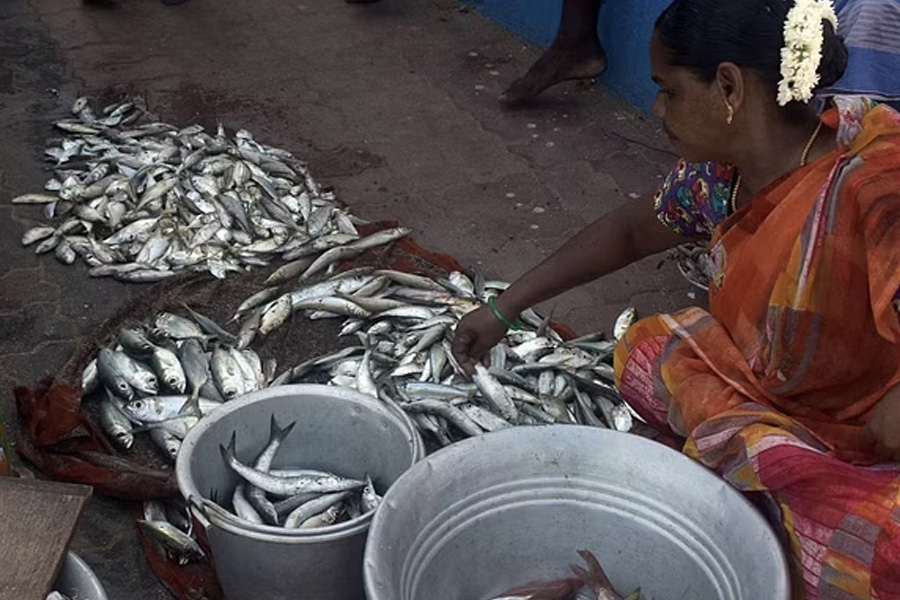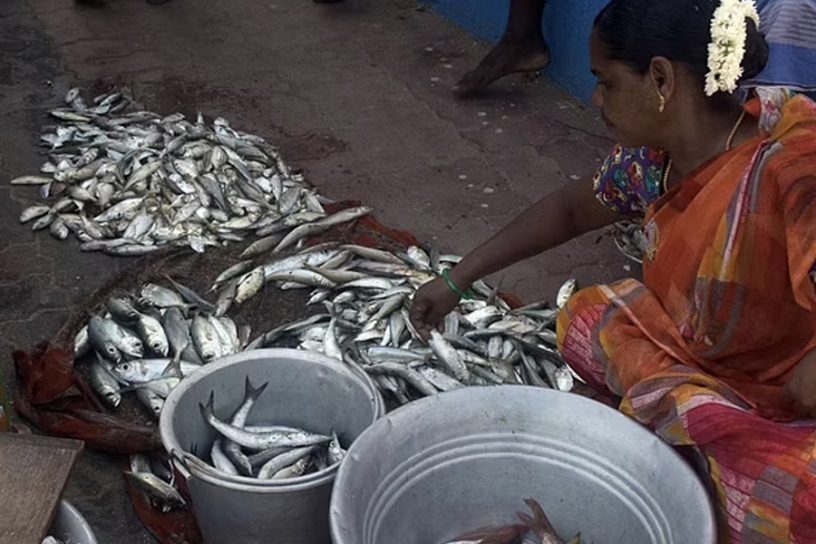
While women contribute significantly to the fishing industry, their efforts are often left out of the narrative.
Authors
Deepanshu Mohan, Associate Professor of Economics and Director, Centre for New Economics Studies, Jindal School of Liberal Arts and Humanities, O.P. Jindal Global University, Sonipat, Haryana, India.
Sakshi Chindaliya, TRIP Fellow and Senior Research Assistant, Centre for New Economics Studies, Jindal School of Liberal Arts and Humanities, O.P. Jindal Global University, Sonipat, Haryana, India.
Jignesh Mistry, Senior Research Analyst and Visual Storyboard Team Lead, Centre for New Economics Studies, Jindal School of Liberal Arts and Humanities, O.P. Jindal Global University, Sonipat, Haryana, India.
Ashika Thomas, Research Analyst, Centre for New Economics Studies, Jindal School of Liberal Arts and Humanities, O.P. Jindal Global University, Sonipat, Haryana, India.
Siddharth G, Senior Research Analyst, Centre for New Economics Studies, Jindal School of Liberal Arts and Humanities, O.P. Jindal Global University, Sonipat, Haryana, India.
Summary
Fishing as a trade is often associated with men. Think, of a trawler with a group of men jostling with the fishing net at twilight in the sea. That’s the usual picture, right?
Though fisherwomen are a blur in the background, they play an imperative role in the fishing supply chain. They are not only involved in auctioning and selling fish, but they do so while juggling their household chores and tending to their families.
To gain insight into the lives, livelihood, and the nature of challenges faced by women in this line of work, we interviewed fisherfolk across the shores of Tamil Nadu and Puducherry.
We also interacted with several women at the auction sites, where the fresh yield of fish is put up for bid, and the marketplaces, where fish is sold to consumers by largely women traders.
A Day in the Life of a Fisherwoman
A typical day for a fisherwoman starts at around 3 am and ends at approximately 4 pm when the markets close for the day. She wakes up early to prepare breakfast before her husband leaves for the sea.
The auctions, almost entirely run by women, begin at 6 am sharp in Tamil Nadu after the men return from the sea.
Meanwhile, the auctions at Goubert Fish Market (also known as the main market) and the Ambour Salai Market (formerly known as the Senji Salai Market) in Puducherry begin as early as 4 am.
With their interconnected lanes, visible spots in this expansive market are competitive; the sales even more so. Big buckets of everything – from crabs and lobsters to various local species of fish – adorn the platforms as women call out to customers to grab their attention.
Close to 360 fisherwomen from three villages – Kurichikuppam, Vaithikuppam, and Vamba Keerapalayam – set up their stalls after buying fish in bulk from the auction sites and imports from states like Kerala and Andhra Pradesh. The women keep coming till 7-8 am, with the last set of women carrying the fish that their husbands catch at sea.
As the hustle-bustle at the market sites starts to quiet down after 2 pm, these fisherwomen rush home to tend to their families.
Published in: The Quint
To read the full article, please click here.


